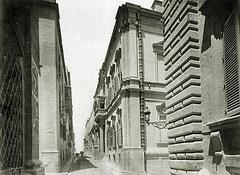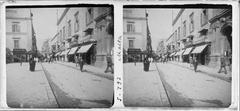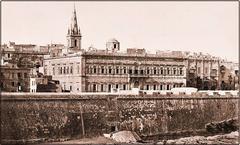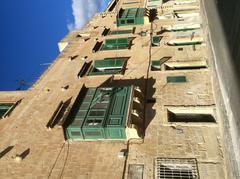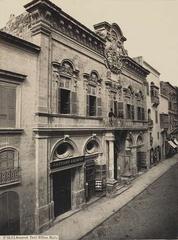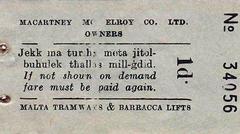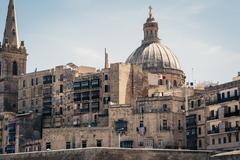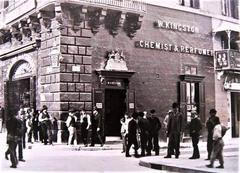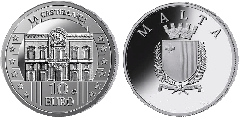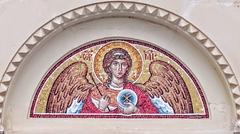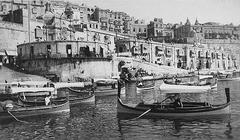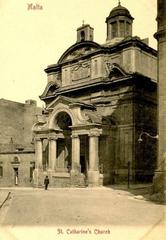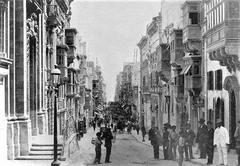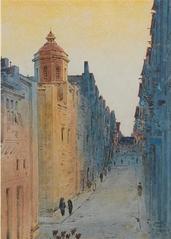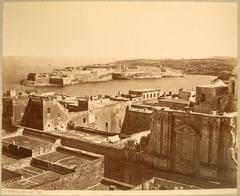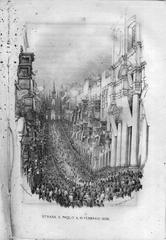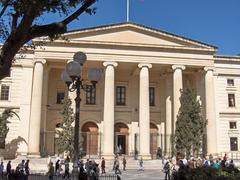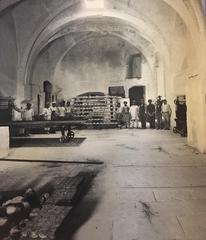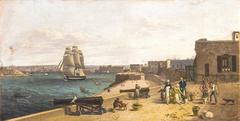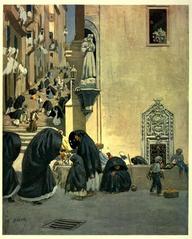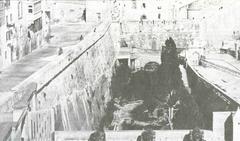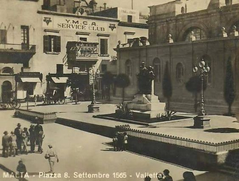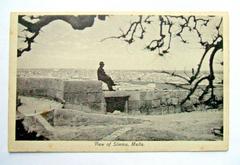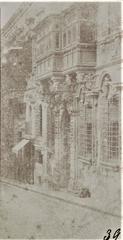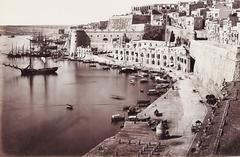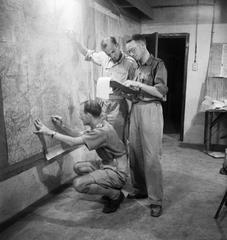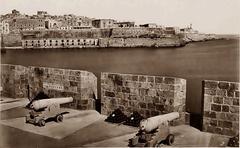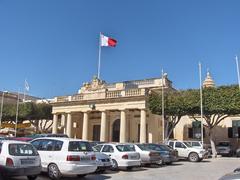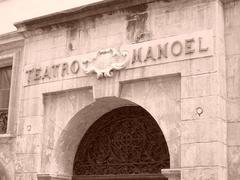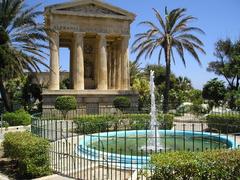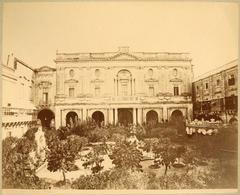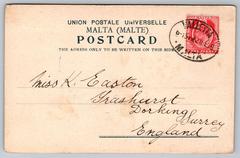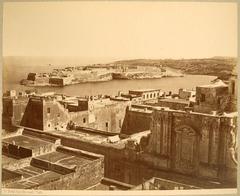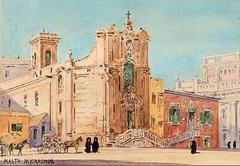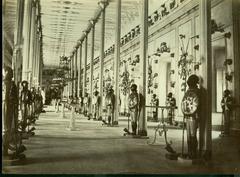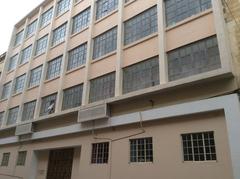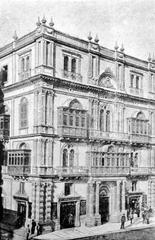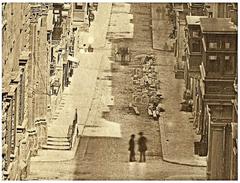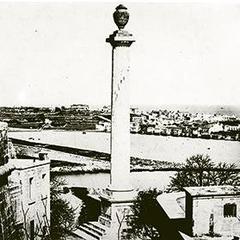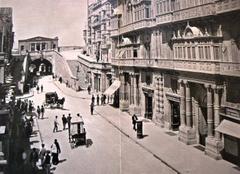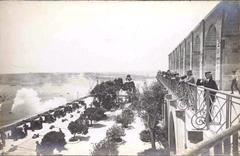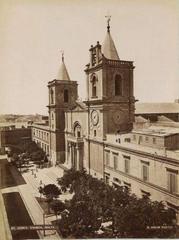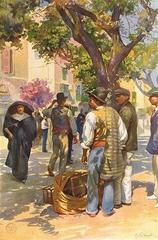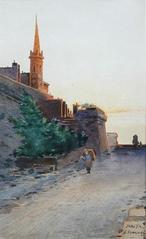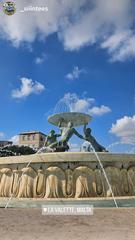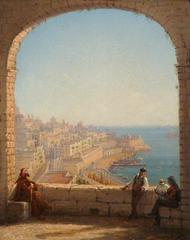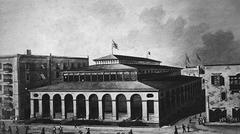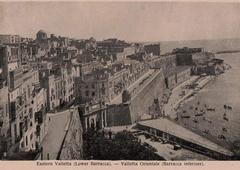Visiting the Monument to Francesco Laparelli and Girolamo Cassar in Valletta, Malta: Visiting Hours, Tickets, and Tips
Date: 15/06/2025
Introduction
Nestled within the fortified city of Valletta, Malta’s UNESCO World Heritage capital, the Monument to Francesco Laparelli and Girolamo Cassar commemorates the visionary architects who laid the foundations for one of Europe’s most iconic Renaissance cities. Erected in 2016 for Valletta’s 450th anniversary, the monument stands as a modern tribute to Laparelli, the Italian military engineer who introduced Renaissance urban planning to Malta, and Cassar, the Maltese architect who adapted and realized these plans on the ground (Heritage Malta, Visit Malta).
Strategically located near Valletta’s City Gate—between Renzo Piano’s modern Parliament building and the evocative ruins of the Royal Opera House—the contemporary bronze monument by John Grima embodies the spirit of collaboration and technical mastery that transformed Malta into a resilient stronghold in the wake of the Great Siege of 1565 (The Alfred Mizzi Foundation, Times of Malta).
This guide explores the monument’s historical and cultural context, architectural symbolism, practical visitor information—including opening hours, ticketing, and accessibility—and offers tips for making the most of your visit to this emblematic Maltese landmark (UNESCO World Heritage).
Table of Contents
- Historical Context: The Knights, Valletta, and Fortress Origins
- Architectural Legacy: Urban Planning and Civic Design
- The Monument: Symbolism and Artistic Features
- Cultural Significance and UNESCO Recognition
- Practical Visitor Information: Hours, Tickets, Accessibility
- Nearby Attractions
- Frequently Asked Questions (FAQ)
- Conclusion and Recommendations
- Sources and Further Reading
Historical Context: The Knights, Valletta, and the Birth of a Fortress City
The monument pays tribute to two pivotal figures in Valletta’s creation. Following the 1565 Great Siege, the Knights Hospitaller realized the need for a fortified city to serve as their headquarters and the island’s primary defense (Heritage Malta).
Francesco Laparelli da Cortona (1521–1570), commissioned by Grand Master Jean de Valette, designed Valletta using the latest Renaissance military engineering principles. His protégé, Maltese architect Girolamo Cassar (c. 1520–1592), oversaw the actual construction, adapting Laparelli’s plans to local conditions and supervising the creation of Valletta’s major landmarks (Visit Malta). Their collaboration marked a turning point in Malta’s history and European urban planning (Times of Malta).
Architectural Legacy: Urban Planning and Civic Design
The Grid Plan and Urban Vision
Laparelli’s adoption of a grid plan—a radical departure from medieval city layouts—enabled rapid troop movement, effective drainage, and clear lines of sight. This design was both a military innovation and a civic statement, reflecting the Renaissance ideals of order and rationality (UNESCO World Heritage).
Cassar adapted these plans to the peninsula’s terrain, constructing robust limestone buildings that could withstand both siege warfare and Malta’s climate. His work ensured Valletta’s harmonious blend of Italian Renaissance ideals and Maltese practicality.
Fortifications and Key Structures
Valletta’s formidable fortifications include bastions, cavaliers, curtain walls, and strategically positioned gates, designed to repel both land and sea attacks (National Inventory of the Cultural Property of the Maltese Islands). Cassar also designed notable civic and religious buildings:
- St. John’s Co-Cathedral: A Baroque masterpiece and cultural landmark (St. John’s Co-Cathedral Official Site)
- Grandmaster’s Palace: The administrative heart of the Knights
- Auberges: Residences for the Order’s different “langues”
- Hospitals, churches, and public squares: Serving the cosmopolitan needs of the city
The Monument: Symbolism and Artistic Features
Sculpted by John Grima and unveiled in 2016, the monument features stylized bronze representations of Laparelli and Cassar. Laparelli holds architectural plans, while Cassar gestures toward the city—symbolizing their complementary roles as planner and builder (Times of Malta). The monument’s modernist style bridges historic and contemporary Malta.
Its location between the Parliament and Opera House ruins underscores the continuity between Malta’s past and present.
Alt text: Monument to Francesco Laparelli and Girolamo Cassar near Valletta City Gate, bronze statues depicting the two architects.
Cultural Significance and UNESCO Recognition
Valletta’s historic core, shaped by Laparelli and Cassar, is recognized as a UNESCO World Heritage Site for its “outstanding universal value” as a fortified Renaissance city (UNESCO World Heritage). The monument is an educational focal point, hosting guided tours and commemorative events that reinforce Malta’s architectural heritage and identity.
Practical Visitor Information: Hours, Tickets, Accessibility
Visiting Hours and Tickets
- Visiting Hours: The monument is outdoors and accessible 24/7.
- Tickets: No entrance fee; visiting is free of charge.
Location and Directions
- Address: Near City Gate, between the Parliament building and Royal Opera House ruins, Valletta.
- Transport: 5-minute walk from Valletta Bus Terminus; recommended to use public transport due to limited parking (Reddit Trip Report).
Accessibility
- Mobility: The plaza is flat, paved, and suitable for wheelchairs and strollers.
- Facilities: Nearby cafés, public restrooms, and seating.
Guided Tours
- Multiple operators include the monument in Valletta walking tours. Check schedules on Visit Malta.
Best Times to Visit and Photography Tips
- Best Times: Early mornings and late afternoons offer the best light and fewer crowds.
- Photography: The monument is photogenic, especially at sunrise or sunset; it is also illuminated at night.
- Nearby Vantage Points: Upper Barrakka Gardens for panoramic views.
Nearby Attractions
While visiting the monument, consider exploring:
- St. John’s Co-Cathedral
- Grandmaster’s Palace
- Upper Barrakka Gardens
- Auberge de Castille
- Republic Street’s shops and cafés
Frequently Asked Questions (FAQ)
Q: What are the opening hours of the Monument to Francesco Laparelli and Girolamo Cassar?
A: The monument is an outdoor public site, accessible 24/7.
Q: Is there an entrance fee or tickets required?
A: No, visiting the monument is free of charge.
Q: How do I get to the monument?
A: It’s a short walk from Valletta’s City Gate and bus terminus; use public transport for convenience.
Q: Are guided tours available?
A: Yes, many Valletta tours include the monument.
Q: Is the monument wheelchair accessible?
A: Yes, the plaza and surrounding paths are suitable for wheelchair users.
Conclusion and Recommendations
The Monument to Francesco Laparelli and Girolamo Cassar is more than a commemorative sculpture—it’s a testament to Malta’s resilience, ingenuity, and the collaborative spirit that shaped Valletta. Accessible at all hours and centrally located, it is the perfect starting point for a historical exploration of Malta’s capital. Early morning or late afternoon visits are recommended for optimal lighting and a tranquil atmosphere. Enhance your visit by joining a guided tour or using the Audiala app for audio guides.
For the latest information, guided tour options, and updates on Valletta’s historical sites, visit the official tourism website and follow official channels for event news.
Sources and Further Reading
- Heritage Malta
- Visit Malta
- Times of Malta
- UNESCO World Heritage
- The Alfred Mizzi Foundation
- Malta Map Society
- Waymarking
